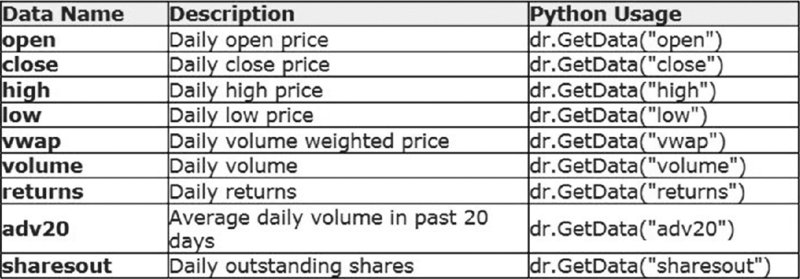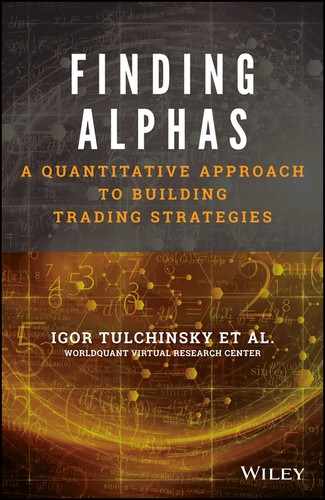26
Introduction to WebSim™
By Jeffrey Scott
Historically, we have created alphas using a sophisticated and proprietary simulation platform. This simulation environment allows researchers to backtest their alphas using multiple datasets including fundamental and price/volume data.
Datasets can include company performance metrics like quarterly earnings, cash flow, and return on assets and liabilities; price/volume data may include opening and closing prices, high and low prices in a specified interval, volume-weighted average price, and daily volume.
Initially, while this model was effective, it had some limitations including the following:
- Researchers needed access to the WorldQuant network to access the simulation platform.
- Since the system was available only across the corporate network, researchers were required to be full-time employees and physically located in a WorldQuant office.
- Most researchers needed to have programming expertise and work with C++.
Over the years, we developed an extensive library of alphas to be used in trading strategies. Our goal, however, was to substantially increase the number and types of alphas available to our portfolio managers. The limitations above imposed restrictions on the speed and level of growth we could achieve.
To overcome these obstacles, we began to consider options. What if…
- …the simulation platform was placed in the cloud as a web-enabled application?
- …we engaged part-time research consultants?
- …we removed the obstacle of programming languages and appealed to a broader audience?
- …we could tap into one of the most knowledgeable and motivated resource pools available: university students?
And so began the genesis of WebSim™…
WebSim™ is a proprietary, web-based simulation platform. Used as a foundation in the core functionality available in our internal simulation engine, WebSim™ was designed as a completely web-enabled application. As a web-based tool, it is accessible 24/7 via any browser.
Its remote availability means that users can be located in various geographic locations, so long as an internet connection is available. Even current university students can create alphas in their spare time without any specific time or location requirements.
Using WebSim™, users create alphas based on their ideas for trading strategies. These ideas are then submitted via the WebSim™ website and backtested against actual historical data to determine how effective they would have been if applied to past market periods.
To avoid having to deal with structured programming languages, a simple command line was implemented to enter alpha expressions as shown in Figure 26.1.

Figure 26.1 Command line for user to enter alpha expressions
Using this command line, users can enter simple or complex formulas using various data elements, which may include fundamental or technical data. For those with a deeper programming background, Python scripting and libraries are available as an alternative option to creating alphas as illustrated in Figure 26.2.

Figure 26.2 Alpha examples in Python
Alphas can be created using fundamental data, price/volume data, or a combination of the two. Various settings are available so a user can run an alpha on diverse “universe settings,” such as the number of equities to use, or the desired timeframe for backtesting.
Figure 26.3 is a sample list of data fields that are available for WebSim expressions. This list is not all-inclusive and is provided simply to reflect the types of available data.


Figure 26.3 Sample list of data fields for WebSim™ expressions
In addition to the data fields, the user can create expressions using a variety of mathematical operators, a sampling of which is provided in Figure 26.4. Again this is not an all-inclusive list, and is provided for sample purposes only.


Figure 26.4 Partial list of mathematical operators for creating alpha expressions
WebSim™ will take the results of the alpha simulation and instantaneously display them for the user to review. Factors such as overall PnL, Sharpe Ratio, and Daily Turnover are immediately visible to determine the effectiveness of the alpha as can be seen in Figure 26.5. Users can then fine-tune their idea with variations on the alpha parameters in an effort to improve its rating.

Figure 26.5 WebSim™ simulation summary
WebSim™ users have access to a dashboard highlighting alphas they have created, along with rating categories, so they can constantly measure their own work. High-quality alphas are processed using Out-Sample testing for further analysis.
